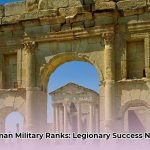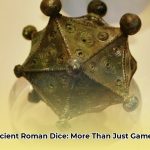Ever wondered how Rome achieved its immense power and vast dominion? A significant portion of this success stemmed from its exceptionally skilled generals, individuals who were far more than mere commanders. They were strategic masterminds, political powerhouses, and charismatic leaders who knew how to win battles, conquer diverse lands, and forge an empire that endured for centuries. This comprehensive historical deep dive explores the sagas of Rome’s most celebrated military leaders, delving into their innovative tactics, profound impact, and the complex interplay of their military genius with the turbulent Roman political landscape. From Scipio Africanus, who decisively defeated Hannibal and reshaped the Second Punic War, to Julius Caesar, a virtuoso of rapid maneuvers and political acumen, we will uncover the secrets behind their enduring legacies. Learn more about these ancient rome generals. We’ll also examine figures like Pompey and Sulla, whose political intrigues were as potent as their military might, and Aurelian, the emperor who heroically saved a fragmenting Roman Empire. By understanding their triumphs, challenges, and unique approaches to warfare, we gain invaluable insights into the essence of leadership, even in contemporary contexts.
Strategic Brilliance: Famous Ancient Roman Generals and Their Proven Tactics
Rome, a cornerstone of Western civilization, was not built overnight, nor was its sprawling empire. A pivotal element of Rome’s ancient world supremacy was the remarkable effectiveness of its military. Yet, the formidable legions were only as powerful as the figures who commanded them. These leaders transcended mere warmongers; they were brilliant strategists, astute tacticians, and charismatic figures who indelibly shaped the course of Roman history. What was the unique formula behind these Roman commanders’ unparalleled success? Let’s explore some of the most renowned generals from ancient Rome and uncover the strategies that propelled them to victory and lasting fame.
Understanding the nuances of Roman leadership, both on and off the battlefield, provides valuable lessons that are surprisingly applicable to modern business strategies, as discussed in this article on effective leadership.
Scipio Africanus: The Strategist Who Dared to Challenge Hannibal
Imagine confronting an adversary deemed invincible. Hannibal Barca, the brilliant Carthaginian general, had relentlessly decimated Roman armies for years during the Second Punic War (218–201 BC), pushing the Republic to the brink of collapse. Then emerged Publius Cornelius Scipio Africanus (236–183 BC). Rejecting a defensive posture, Scipio courageously elected to take the war directly to Carthage, Hannibal’s homeland. This was a monumental gamble, a strategic move many in the Roman Senate considered reckless.
Scipio’s rise was marked by early military feats, including his participation in the disastrous Battle of Cannae (216 BC) and his subsequent command in Hispania (modern Spain) at the young age of 25, where he avenged his father and uncle. He revolutionized Roman military doctrine, moving away from rigid formations to create more flexible and highly maneuverable units, such as the tactical adaptation of the manipular system. His triumph at the Battle of Zama, fought in North Africa in 202 BC, was more than just another engagement; it was a watershed moment that irrevocably altered the balance of power in the Mediterranean. Scipio employed innovative strategies, outmaneuvering Hannibal on his own ground. This decisive victory marked the conclusive end of the Second Punic War.
Historical analysis suggests nuance in Scipio’s success. Was his victory solely attributable to strategic genius, or did external factors contribute? Some historians propose that Hannibal’s forces were significantly weakened after years of protracted campaigning in Italy, potentially offering Scipio a crucial advantage. Others emphasize Scipio’s exceptional ability to learn from and adapt Hannibal’s own tactics, transforming them for his legions. Regardless of the precise interplay of factors, Scipio Africanus remains an icon of military brilliance and audacious strategy, underscoring the importance of adaptability in warfare and earning him the honorary title “Africanus.”
Julius Caesar: The Lightning-Fast Conqueror
Julius Caesar (100–44 BC): a name that resonates with ambition, political acumen, and undeniable military genius. What facilitated Caesar’s extraordinary effectiveness on the battlefield? A core component of his winning formula was unprecedented speed, often summarized by “Veni, Vidi, Vici” (I came, I saw, I conquered). He moved his legions with incredible rapidity, consistently catching adversaries off guard with lightning-fast campaigns. From his extensive conquests in Gaul (58–50 BC), where he famously defeated Vercingetorix at Alesia, to his audacious crossing of the Rubicon in 49 BC that initiated the Roman Civil War, Caesar’s swiftness provided a consistent strategic advantage. His engineering prowess was also legendary, epitomized by his rapid construction of a bridge across the Rhine River.
Beyond rapid maneuvers, Caesar possessed an unmatched understanding of his troops’ needs, fostering an unwavering devotion that translated directly into battlefield successes. He shared hardships with his soldiers, knew many by name, and ensured their loyalty through personal connection and generous rewards. This unique ability to inspire loyalty ensured that his legions remained highly motivated, a crucial factor for victory. Ultimately, it was his potent blend of charisma and calculated ruthlessness that propelled him to the zenith of power within the Roman world, culminating in his appointment as dictator for life.
Despite his military triumphs, some historians contend that Caesar’s ambition ultimately destabilized the Roman Republic. His relentless pursuit of power directly led to a devastating civil war against Pompey the Great and the senatorial forces, culminating in the Republic’s demise and its eventual replacement by the Roman Empire. Irrespective of one’s perspective, Julius Caesar undeniably stands as one of the most influential figures in Roman history, and his military achievements continue to be meticulously studied and debated by scholars across the globe, from his Commentaries on the Gallic War to his assassination on the Ides of March.
Pompey the Great: The Master of Mediterranean Domination
Often overshadowed by Caesar, Gnaeus Pompeius Magnus, or Pompey the Great (106–48 BC), was another pivotal figure in the tumultuous late Roman Republic. He earned his esteemed title “Magnus” (the Great) through a remarkable string of military victories across the Mediterranean and the Eastern world. His early career saw him rise swiftly under the patronage of Sulla, earning the nickname “teenage butcher” for his ruthless efficiency in Sulla’s civil wars.
Pompey’s most remarkable achievements include his campaign against the rampant Mediterranean pirates in 67 BC, which he eradicated within three months by dividing the sea into zones and launching coordinated attacks. This secured vital trade routes, especially for Rome’s grain supply. He then turned his attention to the East, defeating Mithridates VI of Pontus and reorganizing vast territories, extending Roman influence into Armenia, Judea, and Syria, which effectively ended the Seleucid Empire. These numerous accomplishments vividly illustrate an essential aspect of Roman aristocratic life: the inseparable link between military success and political advancement. His military victories amassed enormous wealth and influence, which he skillfully leveraged to propel his political career, even forming the First Triumvirate with Caesar and Crassus. This interconnectedness of military and political power shaped the careers of many Roman elites.
Yet, like numerous Roman generals, Pompey’s burgeoning ambition, coupled with the death of his wife Julia (Caesar’s daughter), eventually led to a catastrophic conflict. His rivalry with Julius Caesar escalated into a brutal power struggle, culminating in the Roman Civil War. Pompey’s eventual defeat at the Battle of Pharsalus in 48 BC and his tragic assassination in Egypt served as a stark reminder of the perils of unchecked ambition within the highly competitive Roman political landscape. His legacy, however, as a formidable military organizer and conqueror of the East, remains secure.
Sulla: The Controversial Reformer Who Seized Control
Lucius Cornelius Sulla Felix (138–78 BC) presents a complex, often controversial, portrait in Roman history. From a relatively impoverished patrician background, his military capabilities were beyond dispute, marked by innovative tactics such as extensive entrenchments and logistical prowess. He distinguished himself in the Jugurthine War (112–105 BC) and later played a crucial role against the invading Cimbri and Teutones during the Cimbrian War (104–101 BC).
However, it was his audacious political actions that truly distinguished him. His intense rivalry with Gaius Marius defined much of the late Republic’s chaos. Sulla famously marched on Rome with his loyal army not once (in 88 BC) but twice (in 82 BC), an unprecedented and sacrilegious act, forcibly seizing control of the Republic and enacting sweeping, often brutal, reforms. His policies were primarily designed to bolster the authority of the Senate and curtail the influence of the popular assemblies and tribunes. His actions, however, were highly controversial, leading to accusations of tyranny. His methods, including the infamous proscriptions (lists of condemned individuals whose property was confiscated and who could be lawfully killed), were extreme even by Roman standards, leading to the deaths of thousands of his political enemies.
One must consider: were such brutal measures truly necessary for the long-term stability of the Republic, or were they a precursor to the dictatorship of Caesar and the subsequent Empire? Sulla’s profound impact extended far beyond the battlefield, undoubtedly reshaping the very fabric of the Roman Republic and setting a dangerous precedent for future military leaders to use their armies for political gain. Remarkably, after consolidating his power, Sulla voluntarily retired from politics in 79 BC, dying a year later, leaving behind a legacy as both a brilliant general and a ruthless, transformative dictator.
Aurelian: The Emperor Who Rebuilt a Shattered Empire
The third century AD represented a nadir for the Roman Empire, a period known as the Crisis of the Third Century (235–284 AD). Plagued by relentless internal strife, devastating barbarian invasions, crippling economic woes, and the fragmentation into three separate empires (the Roman Empire, the Gallic Empire in the West, and the Palmyrene Empire in the East), the vast empire teetered precariously on the precipice of collapse. From this chaos emerged Lucius Domitius Aurelianus, or Aurelian (reigned 270–275 AD), who courageously rose to the immense challenge. Through a series of unrelenting military campaigns, he successfully reunited the fractured territories and stabilized Roman rule, earning him the revered title “Restitutor Orbis” (Restorer of the World).
Aurelian’s remarkable success rested upon his decisive leadership and unparalleled military prowess. He systematically crushed various barbarian invaders, including the Goths and Vandals, securing the imperial borders. His most famous campaigns, however, were against the secessionist empires. He defeated the Palmyrene Empire under Queen Zenobia in the East, capturing Palmyra in 272 AD and reasserting Roman control over Syria and Egypt. Subsequently, he moved West and defeated the Gallic Empire under Tetricus I in 274 AD, finally reuniting the Roman Empire under a single emperor for the first time in over a decade. His reign, though tragically short (he was assassinated in 275 AD), was undeniably crucial, laying the groundwork for the Roman Empire’s eventual recovery and continued existence. He also began the construction of the massive Aurelian Walls around Rome, a testament to the new threats facing the capital.
Scholars often ponder how much longer the Roman Empire could have endured without a leader of Aurelian’s caliber at its helm during such a dire crisis. His transformative reign serves as a powerful testament to the indispensable importance of strong, resolute leadership in times of existential threat, demonstrating that even a vast empire can be saved from the brink by strategic military action.
Belisarius: The Eastern Roman Empire’s Last Hope
Finally, we turn to Flavius Belisarius (c. 500–565 AD), a general who served the Eastern Roman (Byzantine) Empire centuries after the fall of the Western Roman Empire in 476 AD. Was he a “true” Roman general? While serving a distinct Roman successor state, Belisarius undeniably embodied the traditional Roman military virtues of discipline, unwavering courage, exceptional tactical skill, and unshakeable loyalty to Emperor Justinian I. He is often considered the last great Roman general, spearheading Justinian’s ambitious efforts to reclaim the lost Western territories.
Belisarius undertook ambitious campaigns to reclaim vast territories for the Eastern Roman Empire, valiantly combating the Vandals in North Africa (533–534 AD) and the Ostrogoths in Italy (535–540 AD). With limited resources, he achieved stunning victories, such as his swift conquest of the Vandal Kingdom at the Battles of Ad Decimum and Tricamarum, and the complex, protracted Gothic Wars where he managed to capture Rome itself in 536 AD. His strategic victories significantly expanded the empire’s reach and prolonged its survival for centuries. His tactical genius against formidable adversaries, often employing deception, rapid maneuvers, and disciplined sieges, solidified his reputation as one of the greatest military commanders not just in Roman history, but arguably in all military annals.
One might speculate: if the Western Roman Empire had consistently produced more leaders of Belisarius’s caliber, could it have averted its collapse? Or perhaps, could the Eastern Roman Empire have thrived for even longer, particularly had it not been for the devastating Plague of Justinian (541–542 AD) which decimated imperial resources and manpower? Belisarius remains a shining example of enduring Roman military excellence, illustrating how strategic brilliance can prevail even when resources are limited.
Strategic Profiles: A Comparative Overview of Rome’s Greatest Generals
| General | Primary Strategic Approach | Key Military Achievement(s) | Enduring Legacy & Impact |
|---|---|---|---|
| Scipio Africanus | Indirect approach, taking war to enemy heartland | Defeating Hannibal at Zama | Ended Second Punic War, reshaped Mediterranean power. |
| Julius Caesar | Speed, shock, troop loyalty, political integration | Conquest of Gaul, victory in Civil War | Transformed Republic to Empire, unparalleled influence. |
| Pompey the Great | Large-scale campaigns, logistical mastery | Eradication of pirates, Eastern conquests | Expanded Roman dominion, set stage for Caesar’s rise. |
| Sulla | Ruthless efficiency, military-backed political reform | Marches on Rome, proscriptions, constitutional reforms | Precedent for military strongmen, reshaped Roman governance. |
| Aurelian | Unification by force, urgent crisis management | Reunification of Roman Empire, defeating secessionists | “Restorer of the World,” saved Empire from collapse. |
| Belisarius | Adaptive tactics, resourcefulness, bold reconquest | Vandalic War, Gothic Wars, reclaiming lost territories | Extended life of Eastern Roman Empire, tactical genius. |
How Did Roman Logistics Work? The Unseen Foundation of Conquest
Key Takeaways:
- Roman military success was fundamentally dependent on a meticulously organized and highly adaptable logistical system.
- Extensive infrastructure, particularly the famous Roman roads and waterways, proved vital for efficient troop and supply movement across vast distances.
- The Roman army sustained itself through a versatile combination of foraging, systematic requisitioning from provinces, and strategically established garrisons along secure supply lines.
- Adaptability and flexibility were defining characteristics of the evolving Roman logistical system, allowing it to function in diverse terrains and climates.
- The Roman state’s remarkable institutional capacity to plan and execute complex, large-scale operations was paramount, ensuring armies were consistently fed, equipped, and reinforced.
The Foundation: Meticulous Planning and Foresight
Roman military achievements were never solely about courageous soldiers or brilliant battlefield tactics; they were intrinsically linked to meticulous logistical planning. How did Roman logistics work to support such vast military endeavors? The Romans recognized that a well-supplied army was an inherently victorious army. They frequently planned campaigns around agricultural cycles, ensuring that readily available food resources were accessible during harvest seasons. This strategic foresight acted as a powerful force multiplier, providing them with a firm logistical grip over their adversaries, even allowing them to wage war for extended periods far from home. Senior officers were explicitly trained in the principles of logistics, understanding that battles were often won or lost before they even began, simply by the availability of provisions.
Arteries of the Empire: Unparalleled Infrastructure
Consider the immense challenge of conquering and maintaining an empire stretching across three continents without reliable transportation networks. It would be an impossible feat. The Romans understood this implicitly. Their expansive road network, a true marvel of ancient engineering, was far more than just a means of transit. These paved roads, often built by legionaries themselves, connected distant provinces with remarkable efficiency, enabling swift troop movements, rapid communication, and the consistent transport of essential supplies and armaments. They functioned as the very arteries of the empire, pumping vital lifeblood to every corner of Roman dominion. Alongside these terrestrial routes, the Romans fully grasped the critical importance of sea and river transport for bulk goods and large-scale troop movements. Roman naval power meticulously protected these crucial maritime routes, such as the grain shipments from Egypt to Rome, further facilitating their expansion efforts and securing vital supply lines against piracy or enemy interference.
Sustaining the Legions: Intricate Supply Systems
Feeding and equipping a Roman legion, often numbering around 5,000 highly trained soldiers, along with their associated cavalry, auxiliaries, and camp followers, was an enormous undertaking. What did they eat to maintain their strength and endurance? Soldiers primarily relied on frumentum (grain, typically wheat or barley), which they ground into flour to make hardtack or bread, complemented by cibaria (other provisions such as olive oil, wine, salt pork, and cheese). The Roman army employed a versatile combination of direct foraging from local areas (especially in enemy territory), systematic requisitioning of supplies from conquered or allied territories (often paid for to avoid rebellions), and maintaining established, secure supply lines from their strategic bases (castra stativa) and fortified depots (horrea). Beyond food, they also managed vast quantities of firewood for cooking and heating, fodder for their numerous transport animals (mules were crucial), and raw materials for repairs and construction. Furthermore, legions were supported by lixae and calones (camp servants and muleteers), who facilitated the practical aspects of daily logistics, carrying personal gear and assisting with supplies. Clearly, the Roman army did not merely march on its stomach; it required an intricate and highly organized support system to function effectively, managed by specialized logistical officers like the quaestor and praefectus castrorum.
Adaptability and Evolution: A Dynamic System
The Roman logistical system was far from static; it continuously evolved and adapted over time, learning from hard-won experience. Early struggles during the punishing Punic Wars, for example, instilled hard-learned lessons about sustained campaigns and distant supply. By the late Republic and especially during the Imperial period, they had developed a remarkably efficient and sophisticated operation. This continuous improvement highlighted their ability to learn from mistakes and adapt to diverse environmental conditions and varying campaign requirements—whether operating in the cold, wet climate of Britain, the arid deserts of North Africa, or the mountainous terrain of Dacia. The system’s inherent flexibility, whether operating centrally from Rome or through decentralized regional commands, allowed it to effectively support armies across a vast array of challenging situations, demonstrating an impressive capacity for innovation under pressure.
Lessons from the Past: Timeless Principles of Grand Strategy
What can modern strategists and organizations learn from Roman military logistics? Their enduring success powerfully underscores the paramount importance of robust infrastructure, meticulous planning, and unwavering adaptability in any large-scale endeavor. It demonstrates that even the most skilled warriors, the most brilliant tactics, or the most advanced technology cannot truly triumph without a reliable and resilient supply chain. The Roman state’s extraordinary ability to manage and execute complex, large-scale operations serves as a timeless reminder of its remarkable administrative and strategic capabilities. In essence, the empire built far more than roads; they systematically constructed the foundations of enduring success through forethought, organization, and a profound understanding that logistics is not just a supporting function, but an integral part of warfare itself.
📚 https://warhistory.org/@msw/article/logistics-in-roman-warfare
Scipio Africanus’s Victory Over Hannibal – An Essential Analysis
Key Takeaways:
- Scipio Africanus’s triumph over Hannibal at Zama definitively ended the Second Punic War, altering the course of Roman power and establishing Rome as the Mediterranean’s dominant force.
- His innovative military reforms profoundly reshaped Roman legions, introducing greater flexibility and maneuverability through adaptations of the manipular system, making them significantly more adaptable than previous formations.
- The pivotal Battle of Ilipa showcased Scipio’s strategic brilliance in Spain, where he effectively dismantled Carthaginian power through a sophisticated double-envelopment maneuver, proving his tactical mastery before facing Hannibal directly.
- At Zama, Scipio’s brilliant tactics successfully neutralized Hannibal’s fearsome war elephants by creating open lanes in his checkerboard formation, a key strategic challenge that demonstrated his foresight and adaptability.
- Despite his monumental achievements and immense popularity, Scipio faced considerable political opposition and intrigue upon his return to Rome, highlighting the precarious nature of powerful generals within the Roman Republic’s political landscape.
Scipio Africanus stands as an irreplaceable figure in Roman military history, forever synonymous with his ultimate defeat of the legendary Hannibal. But what was it about Scipio Africanus’s Victory Over Hannibal – An Essential Analysis that made it such a pivotal and transformative moment in ancient history? It was not merely a single battle; it was the culmination of audacious strategic genius, groundbreaking military innovation, an unwavering capacity to inspire profound loyalty among his troops, and a keen understanding of both his enemy’s strengths and weaknesses.
Mastering the Battlefield: Adapting to Win
Scipio did not simply inherit and follow established Roman military doctrine; he fundamentally revolutionized it. He keenly understood that the rigid formations and predictable tactics of past legions were insufficient against Hannibal’s dynamic and unconventional maneuvers. So, how did he strategically change the game? According to historical accounts and military analyses, he meticulously reorganized the legions, creating more flexible and highly maneuverable units, allowing them to redeploy rapidly during an engagement. This newfound adaptability proved absolutely crucial on the challenging battlefields of Hispania and, most critically, during the decisive engagement at Zama. Furthermore, Scipio paid close attention to morale, using his charisma to inspire confidence and dedication in his soldiers, many of whom had previously known only defeat against Hannibal.
Spain: A Training Ground for Triumph
Before the climactic confrontation at Zama, Scipio










